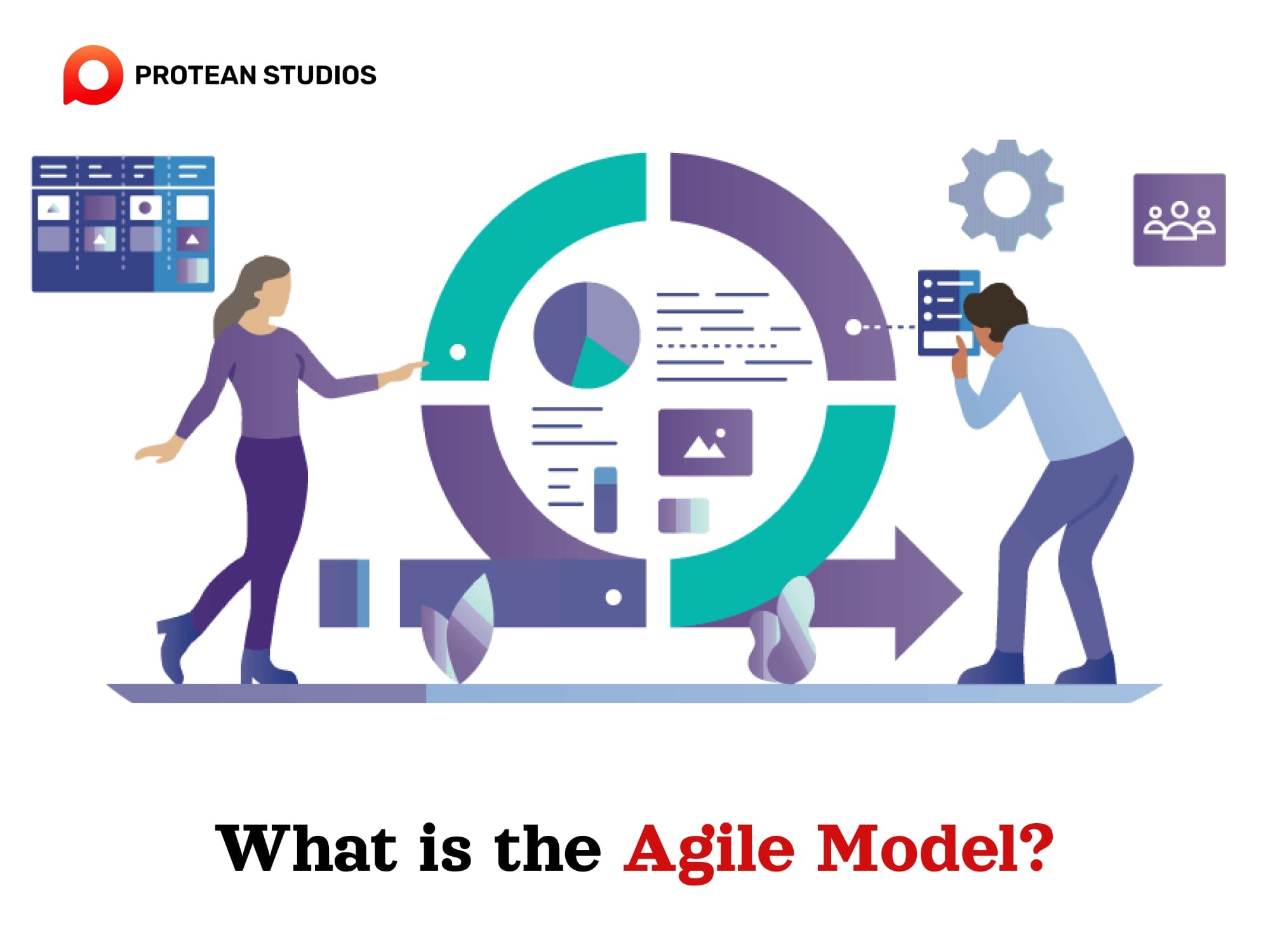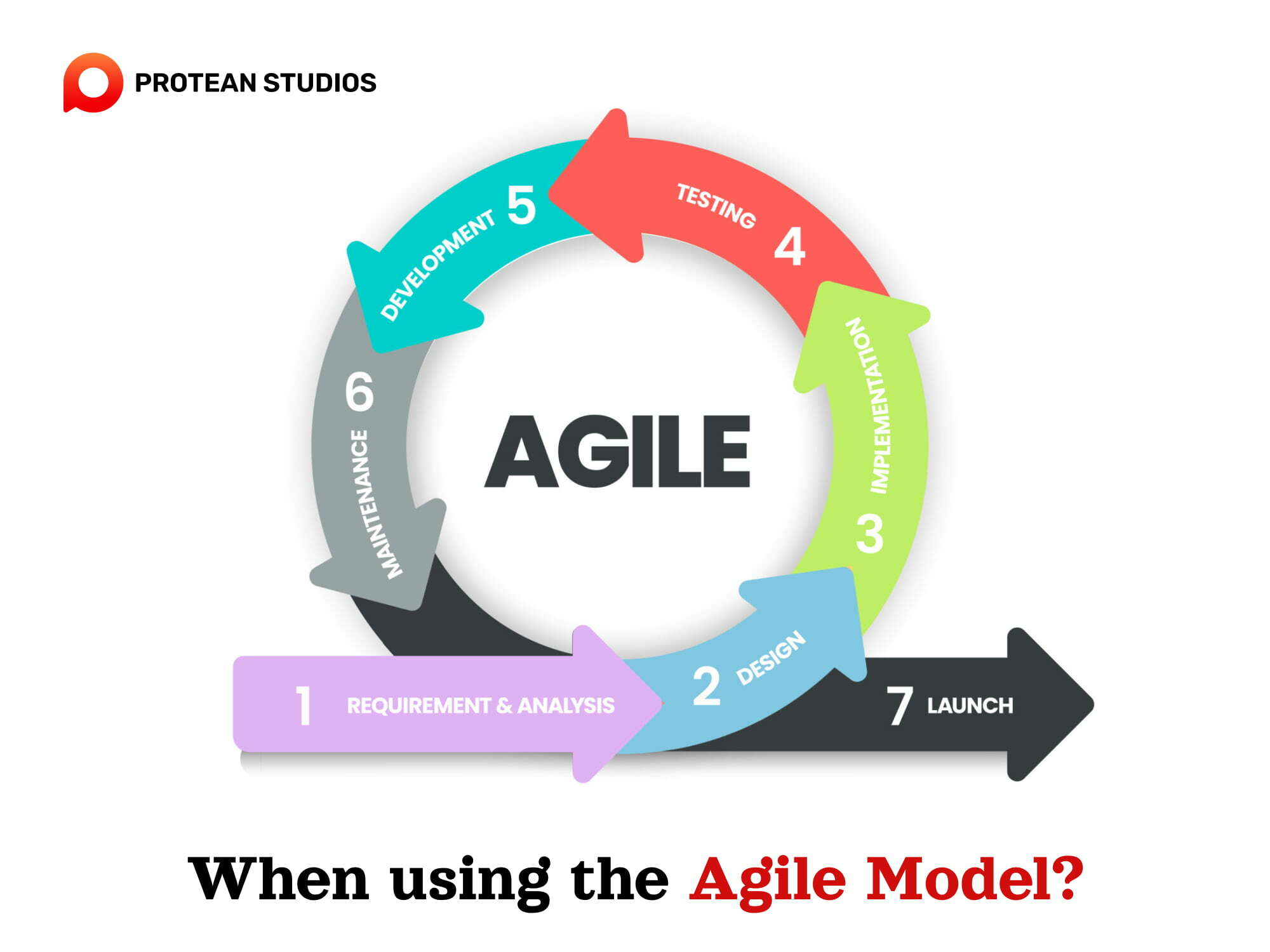The Agile model is one of the most flexible methods for developing IT projects. Unlike traditional, linear methods like the waterfall model, Agile emphasizes flexibility, collaboration, and continuous iteration to provide high-quality software solutions. In this model, its incremental, customer-centric approach characterizes the development process. It allows teams to respond to changing requirements and customer feedback throughout the project's lifecycle.
I. Mastering Agile: A comprehensive model overview
First of all, we will provide some basic information about Agile in the two parts below.
1. What is the Agile Model?
The Agile Model is a modern software development approach that prioritizes adaptability, collaboration, and customer satisfaction. It promotes flexibility and iterative development to accommodate changing requirements and deliver high-quality products.
The agile model consists of several phases, such as requirements gathering, design, construction or iteration, testing or quality assurance, deployment, and feedback. Each phase is performed in a short time frame called a sprint or an iteration, which lasts from one to four weeks. You can know more information related to this method here: Top 3 Outsourced Project Management Methodologies

2. Types of Agile
There are different types of Agile models, such as:
Scrum: A framework that organizes work into short, time-boxed iterations called sprints, where a cross-functional team delivers shippable software. Scrum artifacts comprise some types like the product backlog, the sprint backlog, and the increment.
Kanban: A method that visualizes work as cards on a board, where each card represents a task. Kanban limits the amount of work in progress (WIP) in each column of the board, which corresponds to a stage of the workflow. Thus, it helps to optimize the flow of work and reduce waste.
Extreme Programming (XP): This framework focuses on delivering high-quality software. They will follow a set of core practices, such as pair programming, continuous integration, collective ownership, simple design, refactoring, and frequent releases.
Lean Software Development: An approach that applies the principles of lean manufacturing to software development. It aims to reduce waste, deliver value to customers, empower teams, and optimize the whole system.
Dynamic Systems Development Method (DSDM): Aiming for rapid delivery while maintaining quality and alignment with business needs.
II. Operational phases of the Agile Model
Because this is a flexible model, the software development phases of Agile have improved via some steps below.
1. Requirements gathering
In this phase, the project team and the stakeholders work together to define the scope, features, and priorities of the software product. Based on this information, they can check the technical and economic feasibility before starting to build software.
2. Design the requirements.
Developers will design the architecture, user interface, and database of the software product based on the requirements. After that, the clients review and confirm the design. If they have any dissatisfaction, teams have to fix and change to meet clients’ expectations.

3. Development/iteration
In this phase, the project team develops the software product in small increments, called iterations. Each iteration delivers a working version of the software product that meets some of the requirements. The iterations are short, ranging from one to four weeks.
4. Testing and quality assurance
The third phase of the Agile Model is testing. They will test the software product using criteria such as functionality, usability, performance, security, and reliability. Testing occurs throughout the development process, utilizing both automated tools and manual methods. The team identifies and resolves defects.
5. Deployment
The IT team deploys the software increment to the production environment, enabling end-users to use it. The team also provides technical support and maintenance for the software.
6. Feedback
Finally, the project team collects feedback from the customer and other stakeholders on the software increment. The team uses the feedback to identify and analyze data or modified user stories for the next iteration. It helps with continuous improvement and adaptation of the software to the changing needs and expectations of clients.
III. When using the Agile Model in software development?

The Agile method is suitable for projects that have the following characteristics:
Frequent changes: Agile is a useful method when projects involve frequent changes or evolving requirements. It excels in environments where customer needs are dynamic, allowing teams to adapt to shifting priorities.
Flexible processes: In cases where existing processes are not rigid, you can use Agile. It encourages a collaborative and iterative approach, making it ideal for organizations open to process refinement and improvement.
Accessible product owner: Agile thrives when there is close and continuous collaboration between the development team and the product owner or stakeholders.
Timelines and budgets: This model is suitable for projects with flexible timelines and budgets. It enables teams to focus on and deliver the most valuable features, accommodating changes without affecting the project's success.
IV. Sum up the Agile Model
In conclusion, the Agile model has become a common method in the realm of software development due to its adaptability and customer-centric approach. Its application helps improve efficiency, quality, and customer satisfaction in software development projects.
----------------------------------------------------------------------------------------------------------------------------------------------------------
Agile is a vital model for accomplishing various types of projects, from software development projects to marketing campaigns. If you want to know more information about Agile or research its process, please contact Protean Studios.
We are a reliable technology and software development company with processes that use Agile clearly and transparently. Thus, we can help you streamline agile development and delivery. PROS can help enhance the quality of your code and reduce the amount of time spent on projects. We can also help to reduce ambiguity and conflict within the software development strategy.
If you are looking for a way to optimize your IT application delivery process, please feel free to reach out to us.




